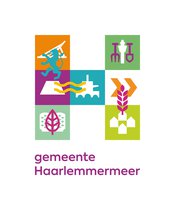Large airports are important transport hubs for the flow of people and goods. Flights arriving and departing generate a constant hum of activity and sound. However, for residents near the airport, the constant flow of air traffic can become unbearable. Prolonged sound exposure is unpleasant, especially if you have no control over it. What’s more serious is that it can lead to mental and stress-induced diseases. It is therefore important to understand if, and how, aircraft noise is affected by the design of streets and buildings. This question is most relevant for very noisy places, such as airports, motorways, and seaports. The sound and exhaust fumes emitted by vehicles and planes have an influence on the local living conditions. Depending on the local circumstance, it is important to design tailored solutions to keep these areas liveable and healthy. We are working towards such strategies in the Urban Comfort Lab by studying the local sound abatement linked to the design of streets and buildings.
Urban Comfort Lab
The Urban Comfort Lab is a field lab built from more than 120 shipping containers near Amsterdam Schiphol Airport. The shipping containers are stacked in the shape of three streets or courtyards, and are packed with sensors. The sensors monitor noise levels around the clock, seven days a week. The data is being used to investigate the impact of building geometry and vegetation on aircraft noise. We carry out research in the Urban Comfort Lab that focuses on the reduction of sound in areas exposed to aircraft noise. Noise can be described as unwanted sounds that are most prevalent in areas close to roads, railways, and airports.
Noise adaptive urban design
The driving question behind this project is whether the design of streets and buildings can lead to less aircraft noise in streets, and around buildings. This question is based on examples of noise barriers and buildings built next to busy roads and rail tracks. There are many good examples of well-designed buildings which act like noise barriers, with surface materials contributing to a reduction of the noise in adjacent streets and neighbourhoods. For example, by tilting the facades facing towards the roads, or mounting noise-dampening vegetation on walls, the incident sound is deflected upward or absorbed.
Noise barriers are most effective when placed close to the source. This means that most of these measures cannot be simply applied one-one to aircraft noise. Compared to noise from roads, aircraft noise typically emanates from a source overhead. This means that noise cannot be contained by placing barriers adjacent to it.
Instead, the Urban Comfort Lab focuses on the design of the local context surrounding pedestrians who are exposed to aircraft noise. There are some simple rules to the game: if you can see the aircraft or sound source, the sound can travel freely between the source and receiver. This means that you are fully exposed to the aircraft noise, which is not the case in areas where the aircrafts are invisible and will be quieter. But, at places without a direct line of sight towards the aircraft, it is yet unclear how much lower the sound levels can be limited to. This depends on many factors, including the configuration of buildings and streets. Our research project endeavours to solve this puzzle, and to determine if, and how, architectural and urban design can help to reduce aircraft noise in cities.
“By combining simulation models with measurements from sensors in streets in which the building design is different, we can identify the influence of design parameters on sound levels”
Martijn Lugten
Research Fellow
How does this work in theory? Well, sound levels around buildings are determined by both sound that bends around a building and sound that is reflected by the surrounding walls. Sound levels will drop if measures are taken to reduce both. On a building level, examples of such measures are slanted roofs, building insets, and roof overhangs. Walls and roofs can be cladded with noise-absorbing materials. Or, you could consider the geometry of the floor, which can reduce sound reflections in streets. An example of a noise-dampening material is a green wall comprised of a substrate for plants with small air pores. Friction between the air in the pores and the material of the substrate converts the sound energy to heat. The landscape of public spaces can also help to reduce noise in streets. Small hills or sunken gardens can deflect sound in the opposite direction from shielded facades.
But what do these theories actually imply in practice? Based on the preliminary results of the research, we estimate that in our field lab, aircraft noise levels can be up to 14 decibels lower near shielded facades than those directly exposed to aircraft noise. This reduction is a result of the surrounding building geometries. Slanted roofs deflect incident sound, yielding the greatest difference between shielded and non-shielded walls. These findings were found after analysing the data from more than 2000 flights. And based on scale model experiments, we expect that adding lawns and green walls can probably reduce the sound levels by an additional 3 decibels.
What's next?
Playing with the shape and positioning of buildings
...to lower temperatures
Our cities must adapt to a changing climate. Rising temperatures will lead to a higher risk of heat waves and urban heat island effects. The abundance of hard and dark surfaces in cities partially explains why temperatures in urban areas are normally higher than rural temperatures. Sultry weather may also affect people’s tolerance to noise. This suggests that higher temperatures might go hand in hand with higher rates of noise annoyance. Just like sound, the position, shape, and construction materials of buildings affect its shading and heating patterns too. Vegetation is often seen as a viable solution to reduce heat stress. Trees and plants provide shade, while moisture evaporation exerts a cooling effect. This raises the question of whether noise abatement strategies can also make cities less prone to extreme temperatures.
...to reduce air pollution
Combustion engines emit noise and exhaust fumes. Air pollution is also emitted by cars and lorries on roads around airports. This results in higher concentrations of (ultra) fine particles in the vicinity of airports, which increases the risk of various health issues and diseases. Vegetation can filter and trap fine airborne particles and influence wind patterns in urban public spaces. This raises the question of whether nature-based noise measures can also improve the local air quality.
Playing with vegetation
During the first year of the lab, the measurements were carried out for empty streets. In this context, empty refers to the surfaces made of acoustically dense materials, such as corrugated steel panels and concrete slabs. The situation will change in 2023. In the first street, the ground surface will be transformed into a lawn to study the influence of flat green surfaces. The second street will receive 36 trees, planted in pots and placed on top of movable pallets. And in the third street, a green living wall will be mounted against the wall which will absorb the incident sound. By comparing the results from 2022 and 2023 it will be possible to determine the effects yielded by these three types of nature-based solutions. The results from measurements will be compared with computer simulations and laboratory studies. The human perception of vegetation on acoustic and thermal comfort is also a topic which will be explored before the end of the project. The results of the second phase of the Urban Comfort Lab are expected in Autumn 2023, and will be shared on this platform.
“Trees in streets provide cooling shade but can also hinder a cooling wind flow. The Urban Comfort Lab allows us to study these hyperlocal effects in in a controlled environment”
Gustaf Wuite
Research Fellow
| Duration: |
|
Principal Investigators
Project members
Partners










